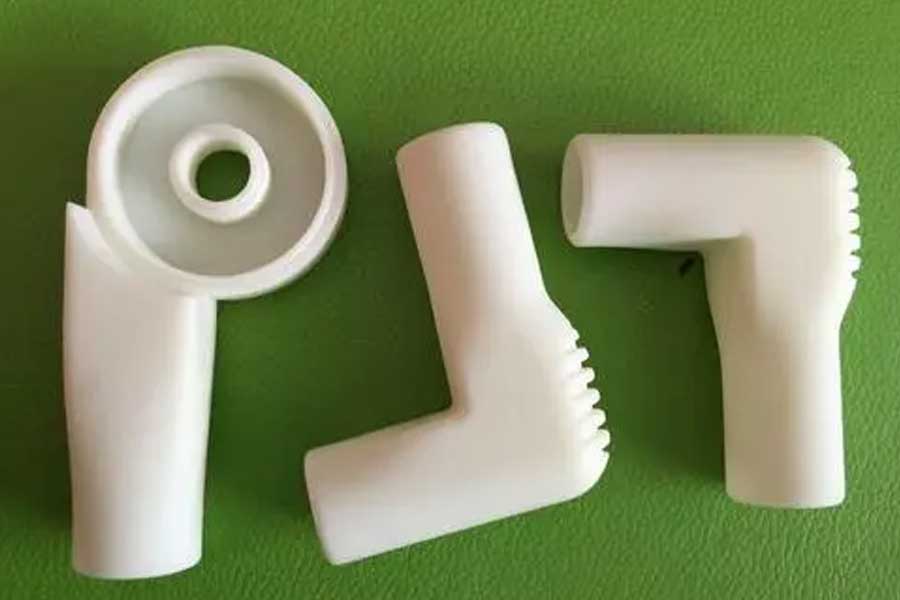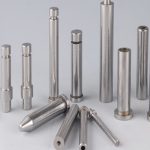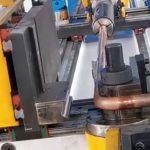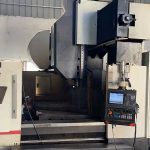Whether for personal, professional or educational purposes, 3D printers are more affordable than ever. Check out what you need to know about the technology to start printing, as well as the highest performing model in our official testing.
If you are in a market, it is important to understand the differences between 3D printers so that you can choose the right model. They come in a variety of styles and can be optimized for a specific audience or a certain type of printing. Ready to take an adventure? This is what you need to consider.
What do you want to print?
A more basic question related to the content you want to print: Why print in 3D? Are you interested in printed toys and/or household items? A trend leader who likes to show your friends the latest gadgets? Educators seeking to install 3D printers in classrooms, libraries or community centers? Hobbyists or DIYers who like to try new projects and technologies? Designers, engineers or architects who need to create prototypes or models for new products, parts or structures? Artists seeking to explore the creative potential of making 3D objects? Or a manufacturer who wants to print plastic products in a shorter period of time?
The best 3D printer depends on how you plan to use it. Consumers and schools will need a model that is easy to set up and use, does not require much maintenance, and has a fairly good print quality. Hobbyists and artists may need special features, such as being able to print objects in more than one color, or using multiple filament types. Designers and other professionals will need excellent print quality. Factories involving short-term manufacturing will require a larger floor area to print multiple objects at once. Individuals or businesses who want to show their friends or customers the miracle of 3D printing will need a beautiful and reliable machine.
In this guide, we will focus on 3D printers that cost less than $4,000. These products are aimed at consumers, hobbyists, schools, product designers, and other professionals, such as engineers and architects. Printers have built-in 3D objects in a continuous layer of molten plastic, which is a technology called fuse manufacturing (FFF). The term is Stratasys, Inc. Trademark, but it is also commonly referred to as Fused Deposition Modeling (FDM). (Although they are not strictly 3D printers, we also include 3D pens, where the “ink” is molten plastic, which the user can use in this overview, it is replaced by hand or using a template.) Some 3D printers use stereo light Engraving technology (this is the first 3D printing technology to be developed), in which ultraviolet (UV) lasers draw patterns on photosensitive liquid resin,
What size object do you want to print?
Ensure the size (in three sizes) of the largest object in the area that can be printed with a given printer (at least in theory, for example, if the build platform is not completely horizontal, it may be smaller). The building area of a typical 3D printer is 6 to 9 inches square, but the sides may range from a few inches to more than 2 feet, and are actually square. In our review, we provided the enlarged area, height, width and depth (HWD) in inches.
What material do you want to use for printing?
Most of the most expensive 3D printers use FFF technology to melt and extrude the plastic filaments available on the spool, and then solidify to form an object. Instead, the two most common filament types are nitrile butadiene styrene (per ABS) and polylactic acid (PLA). Each has slightly different attributes. For example, ABS melts at a higher temperature than PLA and can be softly eliminated, but it emits smoke when it melts. Many users feel unpleasant, so a heated print bed is needed. PLA printing looks smooth, but tends to be brittle.
Other materials used in FFF printing include, but are not limited to, high-impact polystyrene (HIPS), wood, bronze and copper composite filaments, ultraviolet light-emitting filaments, nylon, Tritan polyester, polyvinyl alcohol (PVA), polymer Tertiary ethylene diester (PETT), polycarbonate, conductive PLA and ABS, plasticized copolymer thermoplastic elastomer (PCTPE) and PC-ABS. Various materials have different melting points, so the use of these exotic filaments is limited to printers designed for this, or printers with software that allows users to control the temperature of the extruder.

The filament has two diameters (1.85mm and 3mm), and most models use a smaller diameter filament. Filament is usually sold in 1 kg (2.2 lb) spools, and the minimum for ABS and PLA is US$20 to US$50 per kg. Although many 3D printers will accept universal spools, some companies’ 3D printers use proprietary spools or ink cartridges. Make sure that the diameter of the filament is suitable for your printer and the spool is the correct size. In many cases, you can buy or manufacture (or even 3D print) spool holders that fit various sizes of spools. (For more information about 3D printing filaments, please check our filament specifier.)
Stereo lithography printers can print under pressure, avoid filaments, and use photosensitive (ultraviolet-curable) liquid resin (sold in bottles). Only limited alternatives are available: mainly transparent, white, gray, black or gold. It may be troublesome to use liquid resin and doped alcohol used in the finishing process of stereolithography.
What resolution do you need?
In a 3D printer, the file is equal to the coded instruction of the object to be printed, extending a continuous thin layer of molten plastic. For 3D printing, the resolution is equal to the layer height. The resolution is in micrometers, and the micrometer is 0.001mm. The smaller the value, the higher the resolution. This is because the thinner each layer, the more layers are needed to print any given object, and the finer the details that can be captured. Note, however, that increasing the resolution is a bit like increasing the number of megapixels in a digital camera: although higher resolutions usually help, and thus do not guarantee good print quality.
Almost all 3D printers sold today can print at a resolution of 200 microns (this should produce high-resolution prints), or even better, and many printers can print at a resolution of 100 microns, usually available in sizes Print. A few printers can still print at high resolutions below 20 microns, but you may have to exceed the preset resolution and enter custom settings to enable resolutions below 100 microns.
Higher resolution comes at a price, because you usually pay a higher price for printers with a resolution of more than 100 microns. Another disadvantage of increasing the resolution is that it may increase printing time. Halving the resolution will approximately double the time required to print a given object. But for professionals who need to reduce their print objects, the extra time may be worthwhile.
The field of 3D printing for consumers and hobbyists is still in its infancy. The technology is evolving rapidly, making these products more and more feasible and affordable. We can’t wait to know what improvements will be brought about in the next few years.
Do you want to print in multiple colors?
Some 3D printers with multiple extruders can print objects in two or more colors. Most of them are dual extruder models, and each extruder is fed with filaments of different colors. One caveat is that they can only print colored objects from files designed for multi-color printing. There are separate files for each color, so areas of different colors can be grouped together like a (puzzle) puzzle.
On what surface should you build?
For newcomers to 3D printing, the nature of the build platform (the surface on which to print) may not be obvious, but it is critical in practice. A good platform allows the object to be aligned on it when printing, but it should be easy to remove it after printing. The most common configuration is a heated glass platform covered with blue painter’s tape or similar surface. The items will stick to the tape nicely and can be easily removed after completion. The heated platform can prevent the bottom corner of the object from tilting upward, which is a common problem, especially when printing with ABS.
On some build platforms, you can apply glue (from the glue stick) to the surface to make the object adhere to something. This is possible, as long as the object can be easily removed after printing. (In some cases, you must immerse both the platform and the object in warm water to loosen the object.)
The perforations used by some 3D printers have tiny holes that are filled with thermoplastic during the printing process. The problem with this method is that although the object can be firmly fixed in place during the printing process, the object may not be easily loosened afterwards. Using thumbtacks or awls to push hardened plastic plugs from perforations to release objects and/or clean the board is a time-consuming process and may damage the board.
If the build platform is tilted, it may prevent printing, especially the printing of larger objects. Most 3D printers provide instructions on how to level the build platform, or provide a calibration routine in which the extruder is moved to different points on the platform to ensure that these points are all at the same height. A small but growing number of 3D printers will automatically adjust the level of the build platform.
For many printers, it is also important to set the extruder at the proper height above the build platform when starting a print job. Such “Z-axis calibration” is usually performed manually by lowering the height of the extruder until the build platform is so close that a piece of paper placed between the extruder and the platform can move horizontally with slight resistance. Some printers perform this calibration automatically.
Do you need a closed frame?
Closed 3D printers have a closed structure with doors, walls and covers or hoods. The open model allows easy viewing of ongoing print jobs and easy access to the print bed and extruder. The enclosed model is safer and prevents children and pets (and adults) from accidentally contacting the hot extruder. Moreover, this also means quieter operation, reducing fan noise and possible odors, especially when printing with ABS, which emits the smell of burning plastic.
How do you want to connect to the printer?
For most 3D printers, you can start printing from a computer via a USB connection. Some printers add their own internal memory, which is an advantage because they can keep the print job in memory and continue printing even if the USB cable is disconnected or the computer is turned off. Some provide wireless connections, either via 802.11 Wi-Fi or direct peer-to-peer links. The disadvantage of wireless technology is that since 3D printed files can be up to 10MB in size, it may take longer to transfer them. Another connection method we have seen is Ethernet.
Link to this article: How to choose a 3D printer?
Reprint Statement: If there are no special instructions, all articles on this site are original. Please indicate the source for reprinting:https://www.cncmachiningptj.com/,thanks!
 Sheet metal, beryllium, carbon steel, magnesium, 3D printing, precision CNC machining services for heavy equipment, construction, agriculture and hydraulic industries. Suitable for plastics and rare alloys machining. It can turn parts up to 15.7 inches in diameter. Processes include swiss machining,broaching, turning, milling, boring and threading. It also provides metal polishing, painting, surface grinding and shaft straightening services. The production range is up to 50,000 pieces. Suitable for screw, coupling, bearing, pump, gearbox housing, drum dryer and rotary feed valve applications.PTJ will strategize with you to provide the most cost-effective services to help you reach your target,Welcome to Contact us ( [email protected] ) directly for your new project.
Sheet metal, beryllium, carbon steel, magnesium, 3D printing, precision CNC machining services for heavy equipment, construction, agriculture and hydraulic industries. Suitable for plastics and rare alloys machining. It can turn parts up to 15.7 inches in diameter. Processes include swiss machining,broaching, turning, milling, boring and threading. It also provides metal polishing, painting, surface grinding and shaft straightening services. The production range is up to 50,000 pieces. Suitable for screw, coupling, bearing, pump, gearbox housing, drum dryer and rotary feed valve applications.PTJ will strategize with you to provide the most cost-effective services to help you reach your target,Welcome to Contact us ( [email protected] ) directly for your new project.
Link to this article:How To Choose 3D Printer?
Reprint Statement: If there are no special instructions, all articles on this site are original. Please indicate the source for reprinting:Alloy Wiki,thanks!^^







